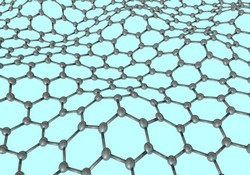Graphene allows polymeric solar cells to evolve
The first and second generations of solar cells are based largely on silicon. Organic (polymeric) solar cells promise important benefits. These include flexibility and reductions in costs for large-area surfaces thanks to well-established polymer processing routes. Graphene electrodes with their excellent conductivity have recently been identified as a promising candidate to achieve efficient bulk heterojunction (BHJ) solar cells proposed more than 25 years ago. However, the mechanisms and effects of integration with a polymeric thin film remain to be determined. The EU-funded project GO-NEXTS(opens in new window) (Graphene doping and texturing in efficient electrodes for organic solar cells) structured graphene contact electrodes to act as photonic crystals. Photonic crystals are periodic dielectric structures with a bandgap forbidding propagation of certain wavelengths of light. The crystals can be likened to the energy bandgap between valence and conduction electrons of semiconductors. This enables exquisite control over electromagnetic radiation not possible with conventional optics. This will facilitate unprecedented enhancements in overall efficiency and performance of BHJ solar cells. Researchers began by focusing on the simulation and fabrication of individual components. In particular, scientists studied the role of graphene-metal contacts, and modelled the graphene electronic properties and the grated contact optical properties. Together with evaluations of effects of various design parameters such as layer thickness, results have pointed the way to promising fabrication activities. Project partners studied chemical vapour deposition (CVD) processes for graphene onto various substrates and graphene growth onto textured photonic crystal substrates. Low-temperature CVD was not able to produce graphene of high enough quality for photovoltaic applications. In contrast, the graphene growth process is now close to state-of-the-art. GO-NEXTS will provide transparent electrode materials, fabrication processes and device architectures. Some of the most likely applications to emerge in the next few years are those that use transparent, flexible graphene electrodes. They include such as solar cells, light emitting diodes (LEDs), organic light emitting diodes (OLEDs), touchscreens and liquid-crystal display (LCD) displays, which are currently fabricated with sputtered indium tin oxide (ITO). Europe a leader in graphene research and the results achieved through GO-NEXTs will enable it to further contribute to advances in this field. The project’s results will thus help to ensure competitiveness with the United States and Asia in the graphene-based technology market. Their application in consumer products has the ability to potentially change everyday life, thereby having a profound impact on future graphene research and marketability.







